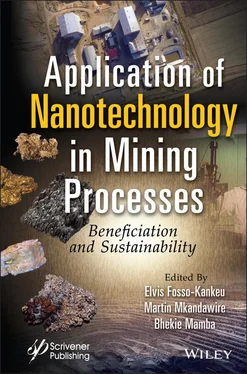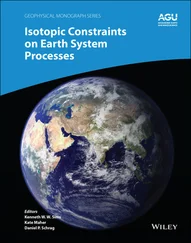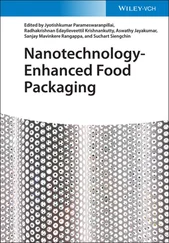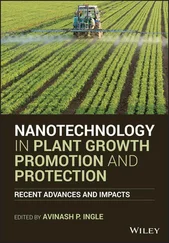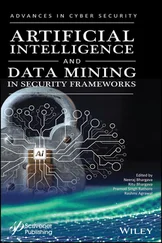Application of Nanotechnology in Mining Processes
Здесь есть возможность читать онлайн «Application of Nanotechnology in Mining Processes» — ознакомительный отрывок электронной книги совершенно бесплатно, а после прочтения отрывка купить полную версию. В некоторых случаях можно слушать аудио, скачать через торрент в формате fb2 и присутствует краткое содержание. Жанр: unrecognised, на английском языке. Описание произведения, (предисловие) а так же отзывы посетителей доступны на портале библиотеки ЛибКат.
- Название:Application of Nanotechnology in Mining Processes
- Автор:
- Жанр:
- Год:неизвестен
- ISBN:нет данных
- Рейтинг книги:5 / 5. Голосов: 1
-
Избранное:Добавить в избранное
- Отзывы:
-
Ваша оценка:
- 100
- 1
- 2
- 3
- 4
- 5
Application of Nanotechnology in Mining Processes: краткое содержание, описание и аннотация
Предлагаем к чтению аннотацию, описание, краткое содержание или предисловие (зависит от того, что написал сам автор книги «Application of Nanotechnology in Mining Processes»). Если вы не нашли необходимую информацию о книге — напишите в комментариях, мы постараемся отыскать её.
Nanotechnology has revolutionized processes in many industries but its application in the mining industry has not been widely discussed. This unique book provides an overview of the successful implementation of nanotechnology in some of the key environmental and beneficiation mining processes.
Audience
Application of Nanotechnology in Mining Processes — читать онлайн ознакомительный отрывок
Ниже представлен текст книги, разбитый по страницам. Система сохранения места последней прочитанной страницы, позволяет с удобством читать онлайн бесплатно книгу «Application of Nanotechnology in Mining Processes», без необходимости каждый раз заново искать на чём Вы остановились. Поставьте закладку, и сможете в любой момент перейти на страницу, на которой закончили чтение.
Интервал:
Закладка:

This edition first published 2022 by John Wiley & Sons, Inc., 111 River Street, Hoboken, NJ 07030, USA and Scrivener Publishing LLC, 100 Cummings Center, Suite 541J, Beverly, MA 01915, USA
© 2022 Scrivener Publishing LLC
For more information about Scrivener publications please visit www.scrivenerpublishing.com.
All rights reserved. No part of this publication may be reproduced, stored in a retrieval system, or transmitted, in any form or by any means, electronic, mechanical, photocopying, recording, or otherwise, except as permitted by law. Advice on how to obtain permission to reuse material from this title is available at http://www.wiley.com/go/permissions.
Wiley Global Headquarters111 River Street, Hoboken, NJ 07030, USA
For details of our global editorial offices, customer services, and more information about Wiley products visit us at www.wiley.com.
Limit of Liability/Disclaimer of WarrantyWhile the publisher and authors have used their best efforts in preparing this work, they make no representations or warranties with respect to the accuracy or completeness of the contents of this work and specifically disclaim all warranties, including without limitation any implied warranties of merchantability or fitness for a particular purpose. No warranty may be created or extended by sales representatives, written sales materials, or promotional statements for this work. The fact that an organization, website, or product is referred to in this work as a citation and/or potential source of further information does not mean that the publisher and authors endorse the information or services the organization, website, or product may provide or recommendations it may make. This work is sold with the understanding that the publisher is not engaged in rendering professional services. The advice and strategies contained herein may not be suitable for your situation. You should consult with a specialist where appropriate. Neither the publisher nor authors shall be liable for any loss of profit or any other commercial damages, including but not limited to special, incidental, consequential, or other damages. Further, readers should be aware that websites listed in this work may have changed or disappeared between when this work was written and when it is read.
Library of Congress Cataloging-in-Publication Data
ISBN 978-1-119-86499-8
Cover image: Pixaby.ComCover design by Russell Richardson
Set in size of 11pt and Minion Pro by Manila Typesetting Company, Makati, Philippines
Printed in the USA
10 9 8 7 6 5 4 3 2 1
Preface
Nanotechnology, initially expected to revolutionize processes in industries, has affected fields in engineering in different ways. For example, the application of nanotechnology in mining processes such as minerals processing and hydrometallurgy has received limited attention so far.
Mining plays a vital role in the economic development of many countries around the world; it is, therefore, understandable that the technologies applied in mining must ensure cost-effective recovery of values from the ore and minimize the impact of processes on the environment. After extraction of ore minerals, they must be separated from the gangue to be processed for metal extraction via a process such as hydrometallurgy which is less energy demanding and has a limited impact on the environment. Although hydrometallurgy has less impact on the environment than pyrometallurgy, the former still contributes to the discharge of solid wastes containing residual sulphide minerals that can be oxidized to form acid mine drainage in the environment. However, little research has been reported on the application of nanotechnology in three mining processes, vis mineral processing (concentration through flotation), hydrometallurgy (concentration or purification of metals loaded solution) and management of mining liquid wastes to minimize environmental impact.
Ore minerals are generally dispersed in a large volume of gangue minerals, requiring therefore that the rock is crushed to small particles for the beneficiation of valuable minerals through froth flotation, which consists of the floatation of crushed particles in an aqueous solution containing “collector chemical” that can attach to the valuable particles allowing them to remain at the top of bubbling solution and making easier to skim them off. In conventional froth flotation, air bubbles are relatively large and less stable; recent findings have shown that the application of nanoflotation can considerably improve the separation of valuable minerals from gangue minerals through the use of hydrophobic nanoparticles or the formation of nanobubbles using special dispersing pumps.
The concentration and purification processes in hydrometallurgy often require selective extraction from solution. However, conventional techniques such as ion exchange and solvent extraction still have low efficiencies. For example, solvent extraction often results in an unpure solution due to poor coalescence of the organic solvent, which contaminates the aqueous solution, also resulting in the loss of expensive reagents. In contrast, conventional semipermeable membranes made of aggregates of polymers and ion exchangers tend to be non-selective because the absence of atomistic control limits sufficient exposure of sidechains to the solution. Recently, nanoscale supramolecular hosts exhibiting selective, high-capacity and recyclable adsorption potential have been developed and applied to extract metals from leachates or pregnant solutions with great success.
One major impact of mining activities on the environment is the formation of acid mine drainage, a very acidic solution rich in metals that can negatively affect aquatic life. One of the approaches to remediate AMD pollution often consists of removing metals using nano-adsorbents with a very large surface area and, therefore, high adsorption capacity. These nano-adsorbents are also used to extract and separate rare earth elements (REE) from mine effluents. In addition, a new approach focusing on the circular economy promotes the valorization of mine wastes such as AMD, resulting in the production of nano-based materials with economic values.
This book presents nine specialized chapters that focus on applying nanoflotation to improve mineral processing, effective extraction of metals from leachates or pregnant solutions using nanoscale supramolecular hosts, and development of nano-adsorbents or nano-based strategies for the remediation or valorization of AMD.
The editors and the publisher are grateful to the reviewers who have contributed to improving the quality of the book through their constructive comments. The editors also thank the publisher for including this book in their portfolio.
This book will be of interest to researchers from the fields of Environment, Chemistry, Engineering, Mineral processing, Hydrometallurgy and Geochemistry, engineers and environmentalists from the mining industry, as well as the environmental policies makers mostly in the public sector, to name a few. Furthermore, it is our wish that this book assists the readers in improving their experimental and operational processes by implementing the ideas disseminated in the various chapters of this book.
Elvis Fosso-KankeuMartin Mkandawire Bhekie B. Mamba January 2022
1
Modified Dendrimer Nanoparticles for Effective and Sustainable Recovery of Rare Earth Element from Acid Rock Drainage
Anyik John Leo1,2*, Innocentia Gugulethu Erdogan1,3, Frans B. Waanders1, Martin Mkandawire1,2, Thabo T.I Nkambule4, Bhekie B. Mamba4 and Elvis Fosso-Kankeu4,5
Читать дальшеИнтервал:
Закладка:
Похожие книги на «Application of Nanotechnology in Mining Processes»
Представляем Вашему вниманию похожие книги на «Application of Nanotechnology in Mining Processes» списком для выбора. Мы отобрали схожую по названию и смыслу литературу в надежде предоставить читателям больше вариантов отыскать новые, интересные, ещё непрочитанные произведения.
Обсуждение, отзывы о книге «Application of Nanotechnology in Mining Processes» и просто собственные мнения читателей. Оставьте ваши комментарии, напишите, что Вы думаете о произведении, его смысле или главных героях. Укажите что конкретно понравилось, а что нет, и почему Вы так считаете.
